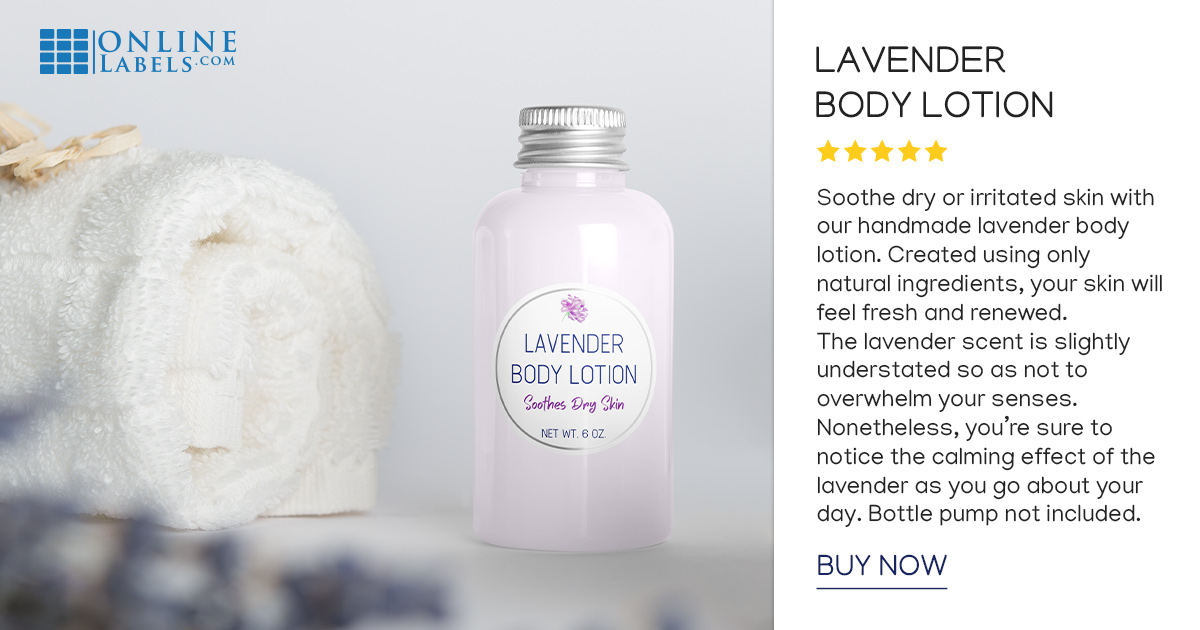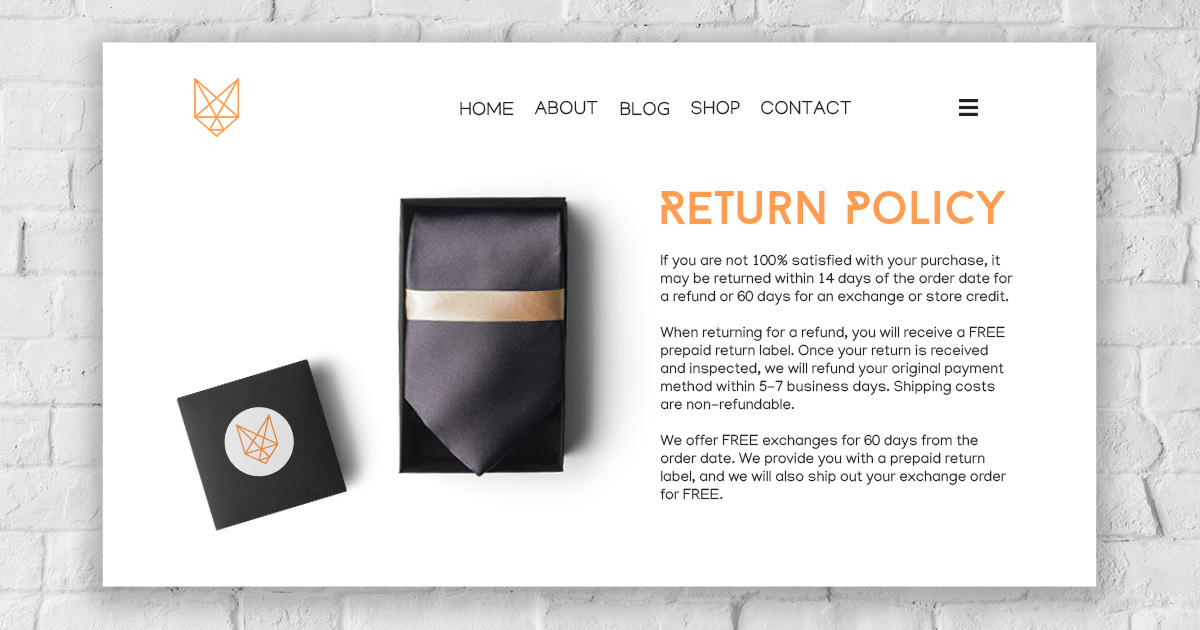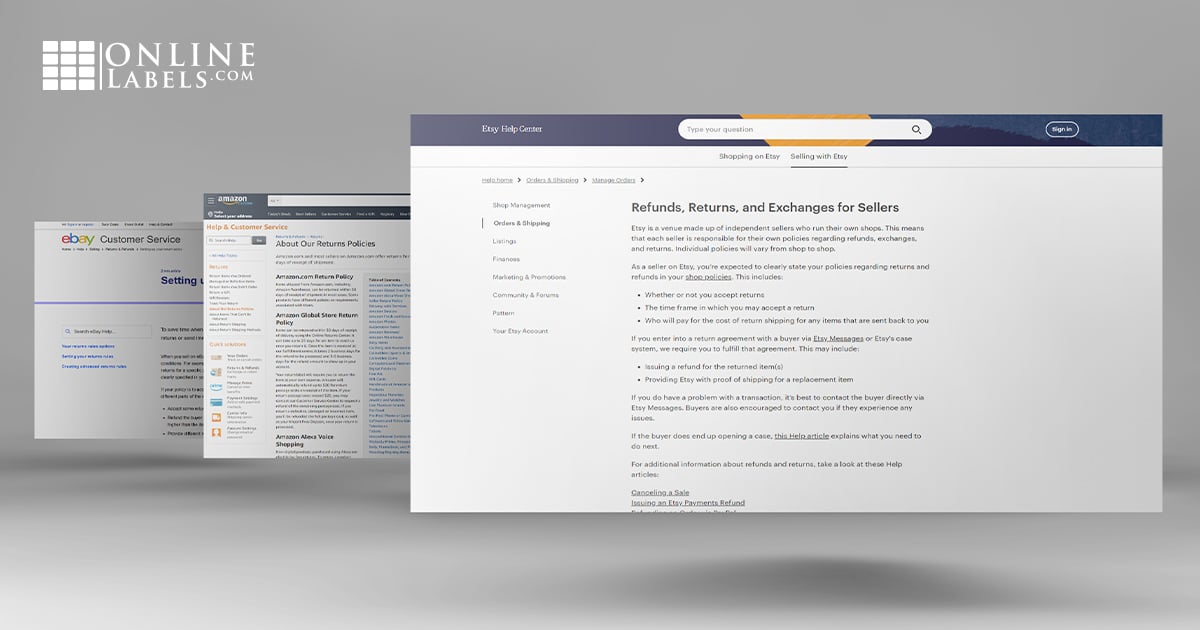How To Handle Product Returns As A Small Business

Economies have thrived on the sale of goods for hundreds of years. And while the way we make purchases has changed over the last decade or two with the rise of e-commerce, the purchase of products is not going anywhere anytime soon.
While multi-billion-dollar, big-name stores like Walmart and Target may not suffer as much of a loss when products are returned by customers, a small business receiving just several returned products a week could put a huge dent in profits.
However, part of offering good customer service in any (big or small) business is accepting returns. Is the impact of an unhappy customer's bad review worth the cost of the product return?
While some profit loss will be inevitable, there are ways retail small business owners can ensure the return process is seamless for both them and their customers. Continuing reading for some things to keep in mind as a small, product-based business.
Be Descriptive On Product Pages

Did you know the number one reason for product returns is that the buyer purchased the wrong item?
This doesn't necessarily mean the customer made a mistake, but that the item wasn't what they expected.
While there isn't much you can do to change consumer behavior, there are steps you can take to lower the chances of this happening – like having an accurate and detailed product description.
To stop returns before they happen, opt for multiple high-resolution photos of your item, videos showing how the products work, sizing charts (if applicable), etc. to minimise the chances of receiving returns.
Check out more product page marketing tips.
Create A Return Policy

If you're selling your products on your own – be it through your own online shop or a brick and mortar store – it's important to create a return policy.
According to eConsultancy, 56% of shoppers value hassle-free return policies and 81% want easy and free returns. Housecall Pro reports that 67% of consumers review a company's return policy before making a decision to purchase.
Clearly, the numbers don't lie.
So before you begin placing products on the market, be sure to write down exactly what your policy will be. This will likely vary depending on your industry/category, but having a clear one in place prior to making sales will not only avoid confusion and frustration for your customers, but also for your employees and yourself.
While there's no blueprint for small business return policies, there are some things you may want to consider when creating one for your company.
Choose To Allow Returns, Exchanges, Or Both
Depending on the nature of your product, you may choose to allow returns, exchanges, or both.
Returns can be considered easier from an operational standpoint as it's a simple transaction to refund the sale. However, you lose a customer unless they're resolute on purchasing another product from you.
Exchanges, on the other hand, can be more complicated to process but allow you to keep the customer and still turn a profit. To make this option work, you'll need to figure out logistics like store credit, gift cards, or promo codes.
List It Everywhere
Craft a detailed return policy and place it clearly on your site. This includes listing it in your header or footer, in FAQs, and even on product pages. You want it to be easy to find and instill confidence in your prospective customers.
Receipts and dispatch invoices are also a good place to include your return policy. If a customer has your product in-hand when deciding to initiate a return, they'll likely reference the record of their transaction for more information and next steps.
Set A Time Limit
Most companies mention a cap on how many days after purchase a customer can make a return. This could be 7, 14, 30, 60, 90, or even 120 days.
Consider the type of product before setting your cap. If you sell one type of product, placing one cap will likely suffice. But if your shop sells items across multiple different categories, you may consider placing different caps on different categories.
Food, for example, would have a smaller return period than clothing or books.
Create Rules & Restrictions
Will you have restrictions on which products you'll accept returns for? Perhaps one type of product will be accepted for a full refund, while another only for an exchange. If so, list these on your policy. Your policy may also depend on the type of products you sell – food and consumables vs. clothing or toys.
But don't make it entirely complicated. Remember, the majority of shoppers want hassle-free returns. Easy and seamless policies play a huge role in your overall customer service quality.
Consider Return Shipping
If your shop is online, another restriction to consider is who'll pay for return shipping. Is this something you want to absorb or pass onto the customer?
Will customers decide they don't want to return your product when they see the cost of return shipping? Will the cost of return shipping irritate customers who are already in a heightened state of displeasure? Is the added "customer satisfaction cost" worth it?
Before you make a decision, evaluate what those return shipping costs would be. If you conclude that your business can't afford it, what about subsidising some of the cost and splitting the return shipping with your customers? There's no one-size-fits-all solution, so don't be afraid to come up with something new.
Decide On Proof-Of-Purchase Requirements
Another thing to consider for your return policy is whether or not a receipt will be necessary when a customer is making a return. You may want to accept other forms of proof of purchase, like a phone number or email address if they were provided at the time of purchase.
And, will the type of "proof of purchase" provided determine whether you'll provide a full refund, even exchange, or store credit? This is important for shoppers to know prior to committing to your shop.
Know The Policy For Your Sales Platform

While there are many benefits to selling through popular platforms like eBay or Amazon FBA, your custom return policy may not apply.
eBay is pretty lenient and allows sellers to create a return policy for their products (under some restrictions). But Amazon's return policy is very rigid. It states buyers will receive a full refund for most items returned within 30 days (if those items are fulfilled by Amazon). For products fulfilled by third-party sellers, the return policy may only vary slightly.
Etsy sellers, on the other hand, are allowed to set their own Etsy shop return policy.
So if you plan on selling your products on an established platform, weigh the options to see which return policy you're most comfortable with.
Make The Return Process Easy

Do what you can behind the scenes to make return processing easy for you, your customers, and your workforce. Dropping standard shipping label sheets inside the package is an easy option.
Not only will this process make it simple for shoppers to ship back your item(s), but it removes the extra step of sending them a return label/instructions and saves them from having to print it out. (Hassle-free returns are essential, remember?)
Keeping track of, and processing returns, is another key. Adding a barcode label to your products will make it easy to scan and process products once they come back to you. This will help with crediting customers back and maintaining an accurate inventory count. If you're new to the topic of inventory management, learn more about barcoding for small businesses.
Some profit loss is inevitable when accepting retail returns but these tips can help you keep it under control. Plus, offering a fair return policy is essential to good customer service and continued sales.
For more business and labeling tips, visit our Label Learning Centre.


